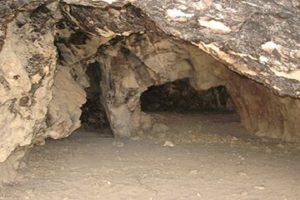Fire temples serve as sacred spaces in the Zoroastrian faith, dedicated to the preservation and reverence of fire. These temples play a central role in Zoroastrian rituals and religious practices. Over the centuries, numerous fire temples have been established in Iran and around the world. While some have fallen into disuse or ruin and are of historical significance, others remain active and accessible to Zoroastrian communities.
This article offers a brief exploration of these sacred sites.
Zoroastrian Fire Temples in Iran, the Land of the Iranian Prophet
Yazd Fire Temple
Location: Yazd, Iran
History: This temple houses one of the Atash Behram fires (victorious fire) considered among the many sacred and significant fires in Zoroastrianism.
Significance: The fire within has been burning continuously for over 1,500 years, making it one of the most important Zoroastrian landmarks worldwide.
Features: The temple features a modest yet meaningful architectural design and prominently displays the Faravahar emblem. It welcomes visitors and stands as a vital symbol of Zoroastrian heritage in Yazd.
Kerman Fire Temple
Location: Kerman, Iran
History: Founded in 1939 (1318), this fire temple was established as a religious center for the Zoroastrian community in Kerman.
Significance: One of the most esteemed fire temples, it holds both cultural and spiritual significance for the followers of Zoroastrianism.
Features: The architecture blends traditional Iranian and Zoroastrian design elements, and the temple serves as a venue for religious ceremonies and festivals for the Zoroastrians of Kerman.
Tehran Fire Temple
Location: Tehran, Iran
History: Established in 1914 (1293), this fire temple was created to house the Atash Behram fire, which was specially transferred from the Yazd Fire Temple and installed in Tehran.
Significance: It stands as the most prominent Zoroastrian place of worship in Iran’s capital.
Features: The temple serves as the main venue for Zoroastrian religious ceremonies in Tehran and features a blend of traditional Iranian and Zoroastrian architectural styles.
Rostam Bagh Fire Temple
Location: Tehran, Iran
History: Construction of this fire temple began in 1958 and was completed in 1960 (1339).
Significance: The establishment of this temple provided the Zoroastrians of Tehranpars with a local place of worship, eliminating the need for long travels to the Tehran Fire Temple.
Features: Its impressive architecture, inspired by Persepolis, is set within the residential Rostam Bagh, making it a unique and remarkable site.
Dare Mehr Gohar and Mehraban Fire Temple
Location: Isfahan, Iran
History: The land for this temple was purchased in the 1350s by the thoughtful Zoroastrian couple, Gohar and Mehraban. The building was completed after the Revolution.
Significance: It is the only active Zoroastrian fire temple in modern-day Isfahan.
Features: The temple’s unique and remarkable architecture is particularly striking.
Isfahan Fire Temple
Location: Isfahan, Iran
History: With ancient origins, this site is believed to have been established during the reign of King Tahmoures, and numerous events and legends are linked to it.
Significance: Prominent historians, including André Godard, Maxime Siroux, and Klaus Schumann, have studied this site extensively.
Features: Located on a hill that rises 100 meters above the surrounding area, it offers a stunning panoramic view and a distinct spiritual atmosphere.
Azargoshnasp Fire Temple (Takht-e Soleyman)
Location: Takab, West Azerbaijan, Iran
History: Constructed during the Sassanian period, this fire temple is one of the three major and most significant fire temples of ancient Iran.
Significance: Azargoshnasp is regarded as a symbol of the power of the Sassanian dynasty and Zoroastrianism, especially esteemed by warriors. It holds great importance in Iranian cultural and religious traditions.
Features: This fire temple is a UNESCO World Heritage site and one of Iran’s most valuable archaeological and tourist attractions.
Azar Faranbagh Fire Temple (Karyan)
Location: Fars, Iran
History: This fire temple was of particular importance during the Sassanian period and was known as the temple of the “Fire of the Priests.”
Significance: Azar Faranbagh was where the sacred fire of Zoroastrian priests and religious leaders was kept, making it a site of great cultural and religious significance.
Features: It played a crucial role in the religious identity of the ancient Zoroastrian community.
Azar Barzin Mehr Fire Temple
Location: Khorasan, Iran
History: One of the three major fire temples of ancient Iran, it was known as the “Fire of the Farmers” and served as a sacred place for Zoroastrian agriculturalists.
Significance: Along with Azar Goshnasp and Azar Faranbagh, Azar Berzin Mehr is considered one of the three principal Atash Bahrams in Iran, dedicated to the fire of the farming and agricultural classes.
Features: The ruins of this fire temple remain a testament to the ancient civilization of Iran. Aspakhu Fire Temple
Location: Bojnurd, North Khorasan Province, Iran
History: Aspakhu Fire Temple dates back to the Sassanian period and is considered one of Iran’s oldest fire temples.
Significance: This site is a key relic of Sassanian religious and cultural heritage, holding significant importance in northern Iran.
Features: The temple’s remains are now the oldest historical landmark in North Khorasan Province.
Rey Fire Temple
Location: Tehran, Iran
History: The Rey Fire Temple was one of the main religious centers for Zoroastrians in ancient Rey.
Significance: Rey played a vital role as a foundational center of Zoroastrianism, with the fire temple serving as a prominent site for ancient Iranian worship.
Features: Some sections of the temple and its inscriptions are still visible today.
Iranshah Fire Temple
Location: Mumbai, Udvada, India
History: The Iranshah Fire Temple was established with the sacred fire of Bahram, brought from Iran, and is located in Udvada, India. It was built in the 7th century CE.
Significance: One of the most sacred fire temples for Zoroastrians worldwide, it was among the first to be established after the migration of the Parsis to India.
Features: Architecturally and spiritually, it mirrors the traditional fire temples of Iran and has housed a sacred fire that has been meticulously preserved for generations.
Adorian Fire Temple
Location: Udvada, Gujarat, India
History: As one of the oldest Parsi Zoroastrian fire temples in India, its fire was brought from Iran and is known as the fire of Bahram.
Significance: The fire has been continuously burning since the 8th century CE, holding great religious and cultural significance for the Parsi Zoroastrian community.
Features: It is one of the most revered places of worship for the Parsi Zoroastrians, drawing devotees from around the world.
Rustom Guibaagh Fire Temple
Location: Navsari, India
History: Established in 1765 CE, this fire temple is one of the oldest in India.
Significance: As a major religious center for Parsi Zoroastrians in the Navsari region, it holds great importance and houses the Bahram fire.
Features: The temple’s architecture harmoniously combines traditional Indian and Parsi Zoroastrian elements, making it a revered destination for Zoroastrian pilgrims.
Bangy Gari (Banaji Limji Agiary) Fire Temple
Location: Mumbai, India
History: Founded in the 17th century CE by Narimanji Bengali, a Parsi Zoroastrian, this fire temple is also known as the Bengali Fire Temple.
Significance: It is one of the oldest fire temples in Mumbai, housing the Adoran fire, which is a lesser grade of fire compared to Bahram and is typically kept in smaller temples.
Features: With its stunning architecture and tranquil ambiance, the temple serves not only as a place of worship but also as an important cultural hub for maintaining Zoroastrian heritage among the Parsi community in India.
Devi Mehta Agiary
Location: Mumbai, India
History: Founded in 1843 CE, this fire temple has become a significant center for Zoroastrian worship and gatherings in Mumbai.
Significance: As a key place of worship, Devi Mehta Agiary holds great importance for the Parsi community, facilitating religious rituals and ceremonies.
Features: The temple is known for its simple yet serene architecture, offering a tranquil space for prayer and reflection for Zoroastrians.
Meherji Rana Library and Museum
Location: Navsari, Gujarat, India
History: Established in the 19th century, this fire temple is named after the prominent Meherji family, one of the most respected Parsi families in India.
Significance: Alongside its religious function, the temple also features a library and museum that houses valuable Zoroastrian manuscripts and artifacts, serving as an important hub for research and study.
Features: The temple, with its library and museum, is a significant center for Zoroastrian research in India, treasured for its scholarly contributions to the community.
Maneckji Limji Hataria Agiary
Location: Karachi, Pakistan
History: This well-known fire temple in Karachi was founded during the British colonial period by the local Zoroastrian community.
Significance: It plays a crucial role in preserving the Zoroastrian heritage in Pakistan and serves as a central gathering place for the community.
Features: The agiary continues to be an important space for worship and cultural activities for Zoroastrians in Karachi.
Pajooji Hirji Ranchhor Agiary
Location: Karachi, Pakistan
History: Founded in 1893, this fire temple has been a key center for both religious and cultural activities within the Zoroastrian community in Pakistan.
Significance: As a symbol of Zoroastrian identity in Pakistan, it hosts numerous religious ceremonies and is a focal point for the community’s spiritual life.
Features: The agiary’s architecture blends Iranian and Zoroastrian design elements, making it a highly sacred and revered place for Karachi’s Zoroastrian community.
Maidaji Jiwa Ji Limji Agiary
Location: Karachi, Pakistan
History: The Maidaji Jiwa Ji Limji Agiary is one of Karachi’s main worship centers for Zoroastrians and has been a site for religious ceremonies over the years.
Significance: It stands as one of the most important sacred places for Zoroastrians in Pakistan, serving as a gathering point for the community and playing a key role in preserving their customs and culture.
Ahmedabad Agiary
Location: Ahmedabad, Gujarat, India
History: This fire temple, established in the 19th century, is one of the most prominent Zoroastrian sites in Ahmedabad.
Significance: The Ahmedabad Agiary is essential in maintaining Zoroastrian traditions, hosting various religious events and meetings, and holding a key place in the community’s life in Gujarat.
Features: With its traditional Iranian architectural style and unique Zoroastrian design elements, this agiary is greatly valued by the Zoroastrian community.
Zoroastrian Temples and Relics in China
Temples and Fire Altars in Chang’an
Location: Chang’an (Xi’an), China
History: During the Tang Dynasty (618–907 CE), Iranian and Sogdian merchants and Zoroastrians, traveling via the Silk Road, established a place of worship in Chang’an. It is believed that at least five Zoroastrian fire temples were built in the city during this time.
Features: In present-day Xi’an, remnants of Zoroastrian symbols and carvings can still be found, indicating their historical presence. However, many of the temples and altars have either been lost over time or repurposed.
Remains of Zoroastrian Temples in Turpan
Location: Turpan, Xinjiang
History: Turpan was a key stop along the Silk Road and welcomed Iranian, Sogdian, and Zoroastrian traders. The area holds evidence of ancient Zoroastrian temples and fire altars from both ancient and later periods.
Significance: The Zoroastrian artifacts in Turpan include inscriptions, sculptures, and symbols that reflect the religious and cultural practices of Zoroastrianism.
Features: Numerous Zoroastrian symbols, including depictions of sacred fire, have been uncovered by archaeologists, marking the region as a prominent site of Zoroastrian influence in China.
Zoroastrian Remains in Dunhuang
Location: Dunhuang, Gansu Province, China
History: Dunhuang, a key cultural point along the ancient Silk Road, has uncovered religious texts and murals with Zoroastrian themes. The site offers evidence of Zoroastrian presence, including carvings and written records.
Features: The Mogao Caves, renowned for their vast collection of manuscripts and wall paintings, feature depictions of Zoroastrian symbols, including fire altars and other sacred emblems, highlighting the area’s religious diversity.
Other Zoroastrian Temples Worldwide
Iranshahr Fire Temple
Location: California, USA
History: Established in 1980 by the Zoroastrian community of California, the Iranshahr Fire Temple is a vital religious hub for Iranian Zoroastrians in the United States.
Significance: This temple serves as an essential venue for religious ceremonies, educational programs, and cultural activities for the Zoroastrian community in America.
Features: Reflecting traditional Iranian and Zoroastrian architectural styles, the temple symbolizes the cultural identity of Iranian Zoroastrians in the United States.
Bagh-e-Bozorg Fire Temple
Location: Panjakent, Tajikistan
History: This fire temple, dating back to the Sassanian period, is among the oldest surviving historical sites in Tajikistan, where the sacred fire was kept.
Significance: It is an important cultural landmark, representing the influence and presence of Zoroastrians in the region before the rise of Islam.
Features: The temple’s remains reflect traditional Iranian architectural styles with clear Sassanian influence, offering a glimpse into the splendor of ancient architecture.
Takti-Saliaba Fire Temple
Location: Baku, Azerbaijan
History: Built during the Sassanian period, Takti-Saliaba was a sacred site dedicated to the preservation of the holy fire.
Significance: This temple is a significant historical monument, illustrating the Zoroastrian heritage of ancient Azerbaijan and the wider Caucasus region.
Features: As one of the few Zoroastrian temples still standing in the Caucasus, it holds notable archaeological and architectural value, particularly for its Sassanian design.
Zoroastrian Fire Temples of Samarkand and Bukhara
Location: Present-day Uzbekistan
History: Samarkand and Bukhara were key cultural and religious centers for Zoroastrians and Sogdians. They played a significant role in preserving the Zoroastrian faith both in antiquity and after the rise of Islam.
Features: The remnants of Zoroastrian temples, fire altars, and inscriptions found in these regions demonstrate their importance as cultural strongholds for the Zoroastrian community.
Tashkent and Merv
Location: Modern Uzbekistan and Turkmenistan
History: Tashkent and Merv were prominent Zoroastrian cities in Central Asia, where fire temples and Zoroastrian inscriptions have been discovered.
Significance: These cities were crucial cultural and commercial crossroads along the Silk Road, connecting Iran and China and facilitating trade and cultural exchange.










